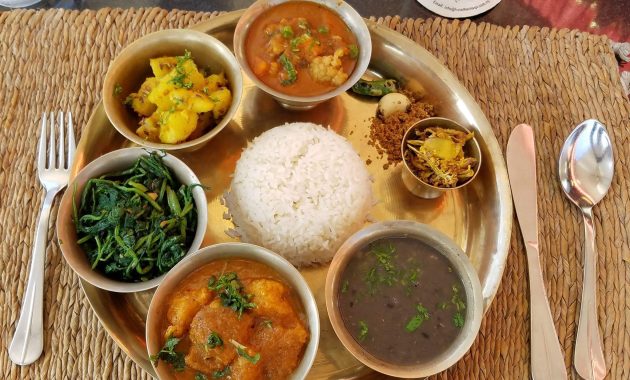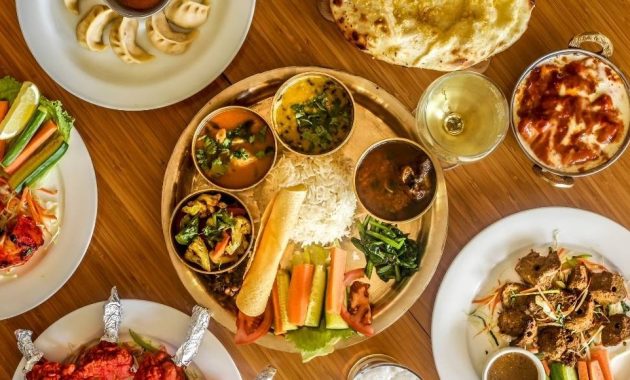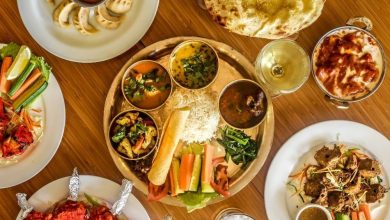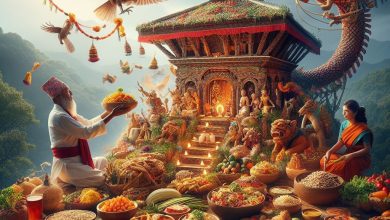What to try in Nepal: traditional cuisine and food
In my opinion, Nepalese food is too often compared to Indian food. On the one hand, there is nothing surprising here, because the two peoples are closely related and many amazing dishes from India are available on almost every Nepalese menu. On the other hand, in many cafes and restaurants there are also Tibetan.
Chinese, European dishes. And yes, if you are imbued with the culinary skills of Indian chefs, Nepal can be somewhat disappointing – the food will seem insipid. Do not forget that this is a mountainous country and they do not have a wide variety of products, and tastes differ, and the dishes are often tailored for tourists.
I don’t want to compare the cuisine of Nepal with anything else. She is eclectic and interesting. She must be tried!
Features of Nepalese cuisine
To begin with, a little about the peculiarities of cuisine and nutrition in this particular country:
Both at home and in many cafes/restaurants, Nepalese prepare meals before they are served. Of course, some preparations are used, but we almost always had to wait 15-20 minutes for the first course, and the main one – and all 30.
This item is especially relevant for eating on mountain tracks – look through the menu and place an order as soon as you check in, then you can do your own business and come to the already laid table. I think that such fresh food is very cool and healthy.
 There are many variations, spices too. The most popular dish is dal-bat. This Nepalese set of rice, lentil stew, vegetable stew, sauces, fresh vegetables and crispy waffles has been tasted by everyone who has visited this country.
There are many variations, spices too. The most popular dish is dal-bat. This Nepalese set of rice, lentil stew, vegetable stew, sauces, fresh vegetables and crispy waffles has been tasted by everyone who has visited this country.
Nepalese cuisine has more vegetarian options. It would even be more correct to say that this is the diet most often followed by locals. Firstly, there are many Hindus in the country who, out of religious beliefs, do not eat meat. Secondly, its cost.
Vegetarian options are always much cheaper. The Newars live in the Kathmandu valley, and their cuisine is more meaty. In big cities and on popular tracks, yak burgers are offered, for example, but many tourists often prefer traditional Nepalese food with a small amount of meat products.
Many Nepalese eat with their hands. But in tourist cafes there is always cutlery.
The main ethnic groups of Nepal are Hindus, Tibetans and Newars. Their daily food is different. The Newars live in the Kathmandu valley and have a lot of meat in their diet. Hindus prefer traditional Indian cuisine – with a predominance of legumes, rice, spices, dairy products, masala chai.
Tibetans and the inhabitants of the Himalayan regions eat a lot of grains, their dishes are simpler and not as spicy as those of the same Hindus. Potatoes, fermented yak milk products, and a very specific Tibetan butter tea are also popular in these areas.
For various reasons (somewhere the specifics of dishes, somewhere – banal unsanitary conditions), people who come to Nepal often have an upset stomach. Therefore, it is recommended to have an arsenal of diarrhea remedies on hand. You should also drink only bottled water, and brush your teeth with it.
Breakfasts, snacks and bread
Let’s start with breakfasts, or rather with their sets. Many Nepalese menus provide complex morning (cook up to 11 hours) sets with different components. Here are their main types:
Simple breakfast: toast, two eggs (omelette/fried/boiled), jam/butter, tea/coffee.
Special breakfast: fried potatoes, two toasts with butter/jam, muesli or porridge, two eggs, tea/coffee, juice of your choice.
Indian breakfast: three puri/chapati, vegetarian curry, tea/coffee.
Tibetan breakfast: Tibetan bread, scrambled eggs/local curry, Tibetan tea.
Variations and additions are also possible. As you can see, breakfasts are quite satisfying, and if you like everything that is included in them, feel free to order a set – it will come out cheaper. In addition, both in the morning and throughout the day, you can order the following dishes:
Tibetan bread. Everything is simple, but the taste is somehow special. Served as a large round flatbread. Spread butter or jam on it – here you have a hearty breakfast.
 Porridge / muesli / tsampa. Most often it is made from roasted barley flour, which is diluted with Tibetan tea. It turns out a mass of gray color, reminiscent of a bread crumb. Locals often eat tsampa simply because it is cheap and affordable.
Porridge / muesli / tsampa. Most often it is made from roasted barley flour, which is diluted with Tibetan tea. It turns out a mass of gray color, reminiscent of a bread crumb. Locals often eat tsampa simply because it is cheap and affordable.
Buckwheat bread. Cool and hearty pancake bread.
Chapatis and naans. Favorite wheat cakes from India. Chapatis are usually convenient to take with different curries, and naans can be an independent dish. They come with potato, cheese, garlic fillings.
Pancakes. There are only a few main types: simple, apple, chocolate, lemon-sugar. But how many variations of their preparation! As a big fan of pancake breakfasts, I have tried many of them. Pancakes are very different from our sizes.
I would even say that it is like our very thick pancakes the size of a pan. One can eat. Apple pancakes are baked with apple slices, chocolate pancakes can be simply drizzled with something like Nutella on top or cooked with cocoa, and my favorites are drizzled with a delicious lemon-sugar mixture.
Rosti. A potato dish that resembles our potato pancake, only very large. You can order a simple one, but it is better to take it with tomatoes and cheese.
Soups
In Nepal, I met two groups of soups: very hearty with a lot of vegetables and noodles (tukpa, thentuk) and very simple, but rich broths (garlic, tomato, onion, potato). True, some menus also have ordinary vegetable and chicken soups similar to ours.



